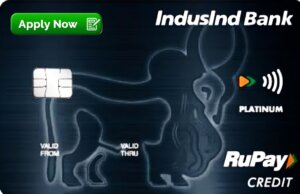Navigating the world of auto insurance can feel overwhelming, especially with all the unfamiliar terms. Whether you're purchasing coverage for the first time, reviewing your current policy, or switching providers, understanding the key language of auto insurance can help you make informed choices and avoid costly mistakes.
This guide will walk you through the most important auto insurance terms you need to know. We’ve simplified the jargon so you can better understand your policy and make decisions that protect you and your vehicle.
1. Premium
Your premium is the amount you pay to maintain your insurance policy. This payment might be due every month, every six months, or once a year. Essentially, it’s the price you pay to have protection in case something goes wrong.
Factors that influence your premium include your age, driving history, car model, location, and the type and amount of coverage you choose. Safe drivers typically pay less, while those with violations or accidents might pay more.
2. Deductible
The deductible is the portion of a claim that you’re responsible for paying out of your own pocket before your insurance coverage kicks in. For instance, if your deductible is $1,000 and the total repair cost is $4,000, you’ll pay $1,000, and your insurer will cover the remaining $3,000.
Choosing a higher deductible usually lowers your premium, but it also means more out-of-pocket expenses when filing a claim.
3. Liability Insurance
Liability coverage is a requirement in most states. It covers damage or injuries that you cause to others in an accident where you're at fault.
There are two main parts:
-
Bodily Injury Liability (BIL): Pays for the other person's medical expenses, lost wages, and legal fees.
-
Property Damage Liability (PDL): Pays for damage you cause to someone else's vehicle or property.
This coverage does not pay for your own injuries or vehicle damage.
4. Collision Coverage
Collision coverage helps pay for damage to your car resulting from a crash, regardless of who is at fault. It applies when you hit another car, a stationary object, or if your vehicle rolls over.
This coverage is especially important for newer cars or those under a lease or loan.
5. Comprehensive Coverage
Comprehensive insurance covers non-collision-related damage. It protects against:
-
Theft
-
Vandalism
-
Natural events like hail or flooding
-
Fire
-
Hitting an animal
-
Falling objects (e.g., tree limbs)
A deductible applies here as well. Comprehensive and collision coverage together offer full protection for your car.
6. Uninsured/Underinsured Motorist Protection
If you're hit by a driver without insurance or not enough coverage, uninsured/underinsured motorist coverage can save you from having to pay out-of-pocket.
-
Uninsured Motorist Bodily Injury (UMBI): Helps pay for injuries you or your passengers sustain.
-
Uninsured Motorist Property Damage (UMPD): Helps repair or replace your car or damaged property.
7. Medical Payments Coverage (MedPay)
MedPay helps cover medical bills for you and your passengers after an accident, no matter who caused it. It typically pays for:
-
Emergency treatment
-
Surgery
-
Hospital stays
-
Ambulance services
It’s optional in many areas but provides useful support, especially if you have high-deductible health insurance.
8. Personal Injury Protection (PIP)
Personal Injury Protection provides a broader range of benefits than MedPay. It can pay for:
-
Medical treatment
-
Lost income
-
Funeral costs
-
Replacement services (like childcare)
PIP is required in no-fault insurance states and is designed to help reduce legal disputes over minor accidents.
9. Gap Insurance
If your vehicle is financed or leased, gap coverage may be a smart addition. If your car is totaled in an accident, your insurer will pay its current market value—not what you still owe. Gap insurance covers that difference.
For example, if you owe $20,000 on your car loan but the car is only worth $16,000 at the time of a total loss, gap insurance pays the $4,000 difference.
10. Actual Cash Value (ACV)
ACV is the amount your car is worth at the time of a loss, taking depreciation into account. It’s the amount your insurer would pay if your car were declared a total loss.
Since vehicles lose value over time, the ACV is usually lower than what you originally paid for the car.
11. Replacement Cost
Replacement cost coverage ensures your insurer pays enough to replace your vehicle with a new one of the same make and model. Some companies offer this for newer cars as part of optional coverage.
It differs from ACV because it ignores depreciation.
12. Declarations Page
The declarations page, or "dec page," is a summary of your policy. It includes important information like:
-
Policyholder details
-
Vehicles covered
-
Coverage types and limits
-
Deductibles
-
Premiums
-
Policy start and end dates
Reviewing this page can help you quickly understand what your insurance covers.
13. Policy Term
Your policy term is the length of time your insurance coverage remains active—typically six months or one year. At the end of the term, your insurer may renew the policy, sometimes with updated rates or coverage based on changes to your record.
14. Exclusions
Exclusions refer to scenarios or people not covered by your policy. For example, your insurer might not cover damage from racing, using your car for business, or letting an unlisted driver use your vehicle.
Be sure to read the exclusions section to understand the limitations of your policy.
15. Endorsements or Riders
An endorsement (also called a rider) is an optional addition to your policy that modifies or adds specific coverage. Common endorsements include:
-
Custom parts coverage
-
Rental car reimbursement
-
Increased liability limits
-
Roadside assistance
They allow you to tailor your insurance to fit your needs.
16. Claim
A claim is a formal request made to your insurance company to receive payment for damages covered under your policy. After an accident or other covered event, you'll file a claim so the insurer can assess the damage and determine what they’ll pay.
Frequent or high-value claims may increase your premium.
17. Total Loss
A vehicle is declared a total loss when the cost to repair it exceeds a certain percentage of its market value (usually 70–75%). In such cases, the insurer will typically pay you the ACV rather than covering repair costs.
18. No-Fault Insurance
In no-fault insurance states, drivers turn to their own policies for coverage of injuries after an accident, regardless of who was at fault. This system reduces lawsuits and speeds up compensation.
PIP coverage is often required in no-fault states.
19. Underwriting
Underwriting is the process an insurance company uses to evaluate your risk profile and determine your premium. Factors often considered include:
-
Driving history
-
Age and gender
-
Type of vehicle
-
Location
-
Credit score (in applicable states)
This process ensures that pricing reflects the likelihood of future claims.
20. SR-22 Certificate
An SR-22 is a certificate your insurer files with the state to verify that you carry the required minimum insurance. It’s often required after serious driving offenses like:
-
DUI or reckless driving
-
Driving without insurance
-
Multiple traffic violations
Having an SR-22 on file can significantly raise your premiums.
21. Multi-Car Discount
Insuring more than one car under the same policy may qualify you for a multi-car discount. It’s a cost-saving option for families or households with multiple drivers and vehicles.
22. Bundling Discount
A bundling discount is offered when you purchase multiple insurance products—like auto and homeowners insurance—from the same provider. Bundling often results in lower overall costs and simplifies your billing.

23. Roadside Assistance Coverage
Adding roadside assistance to your policy gives you access to emergency services such as:
-
Towing
-
Jump starts
-
Flat tire changes
-
Lockout help
-
Fuel delivery
It’s a small investment that can save you time and stress in emergencies.
24. Rental Car Reimbursement
If your car is being repaired due to an accident, rental reimbursement coverage pays for the cost of a rental car while yours is in the shop. This is only applicable when the damage is part of a covered claim.

25. Telematics Programs
Some insurers offer telematics programs that track your driving behavior through a device or mobile app. Data collected includes:
-
Speed
-
Braking habits
-
Mileage
-
Time of day you drive
Safe drivers may qualify for discounts based on their habits.
Conclusion
Understanding your auto insurance doesn't have to be confusing. By getting familiar with these common terms, you'll be better prepared to choose the right policy, adjust your coverage as your needs change, and ensure you're protected if the unexpected happens.
Before finalizing any insurance policy, take time to compare options, ask questions, and carefully review your coverage limits and exclusions. Being informed puts you in the driver's seat when it comes to your financial protection.

Read More: -








.jpeg)
